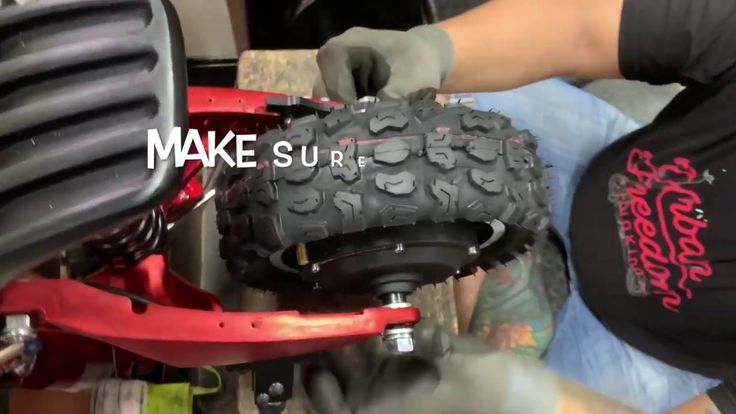How To
A Quick Trailside Lesson
By ATV Rider
May 9, 2014 Remove the valve stem core, and pump the recommended amount of SLIME into the tire (the bottle will have recommended doses). Reinstall the valve stem core, and inflate the tire. Make sure the vehicle is driven around for a bit after installing the SLIME so it doesn’t puddle in the bottom of the tire.
Remove the valve stem core, and pump the recommended amount of SLIME into the tire (the bottle will have recommended doses). Reinstall the valve stem core, and inflate the tire. Make sure the vehicle is driven around for a bit after installing the SLIME so it doesn’t puddle in the bottom of the tire.How To
10 Things to Know When Purchasing Used ATV Shocks
How To
Can Your Truck’s Tailgate Handle Your ATV?
How To
Starting Repairs on a 2010 Arctic Cat 400
How To
Sponsorship Lessons from a Pro
How To
Top Quad: Building a Racer on a $3,000 Budget
As you may already know, patching can be an option for fixing a flat car tire or motorcycle tire. But does it work on ATV tires? After all, ATV tires are typically used in much rougher conditions when going off-road. Like with so many other problems you can stumble on as an ATV owner, no one answer fits all.
Like with so many other problems you can stumble on as an ATV owner, no one answer fits all.
ATV tires can be patched, depending on the size, shape, and location of the puncture. Minor to medium holes in the threaded area of the tire can be patched using a traditional patch or preferably a plug patch. More extensive tears or sidewall damage cannot be permanently fixed, but temporary solutions are available for emergency repairs.
So how do you know whether your specific puncture can be patched? And when should you choose to patch over other alternatives such as a string plug, tire slime, and others? Here are some guidelines to follow.
Not all tire leaks and punctures are the same. This is important because the type of leak you face dictates the best method for fixing the leak.
Just as there are different types of tire leaks, there are various ways of fixing them. Not all holes can be patched; other methods may be better suitable.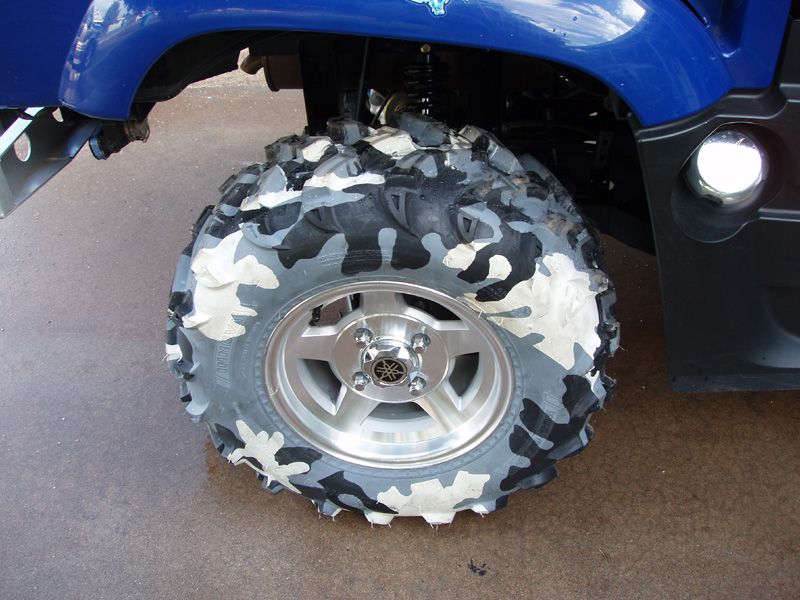
There is also a difference between repairing a car tire and a slow-speed, such as an ATV tire. For car tires, you are only allowed to repair a tire if:
ATV tires for off-road use are not subject to the same regulations, but they still make for good guidelines, especially if you do a lot of high-speed trail riding or racing.
The sidewalls are the weakest part of any tire. Because the sidewalls of a low-pressure tire need to be flexible, they have less rubber and lack some of the steel or nylon enforcement used in the threaded area for puncture resistance.
The flexible nature of the low-pressure tire sidewalls makes them more prone to tears and harder to repair. While you might be able to patch a tear in the sidewall, it may not last too long, especially if you run the tire at low pressure. As soon as you go over a rock, the sidewall will flex, making the patch the weakest link.
As soon as you go over a rock, the sidewall will flex, making the patch the weakest link.
There is no proper way of permanently repairing a sidewall tear or puncture. However, there are a few aftermarket options to consider that will get you by if you’re in a pinch.
Note that products such as sidewall repair kits or sidewall slugs are not meant as permanent repairs but simply emergency repairs until you can replace the tire. They are only for slow-speed, off-road use and should never be used on high-speed or on-road tires.
There is no safe or legal way of repairing the sidewall of an on-road tire. Your only option is to replace the tire with a new one. If your other tires are worn, you may need to replace them as well to prevent driveline wear or damage, especially if you ride a lot on paved roads.
Your typical minor puncture happens from running over a nail, a piece of wire, or any other small and sharp metal object. The air may leak out over a few hours or a few days if the protruding object is still stuck in the tire.
The air may leak out over a few hours or a few days if the protruding object is still stuck in the tire.
These punctures are typically easy to fix, both temporarily out on the trail or permanently when you get back home to your garage or a tire shop.
Most small punctures up to ¼ inch in diameter in the threaded area of a tire can be permanently repaired from the inside using a plug patch. However, the angle of the puncture should be at least 45 degrees or more to the tire.
Patching from the inside is the recommended method for fixing smaller punctures, and it’s the only one that is considered by the industry as a permanent repair if done correctly. An inside patch plug will more than likely outlast the remaining lifetime of your ATV tire.
Related: How to patch an ATV tire – Illustrated Guide
If you’re out on the trail or just looking for a quick fix, you can fix most small punctures using what is commonly referred to as a string plug kit or rope plug kit—more on the pros and cons of string plugs vs. patches further down in this post.
patches further down in this post.
Other alternatives include Tire Slime, which injects the tire with a slimy substance that covers and seals small leaks. While this method is effective on most small leaks, it leaves a mess inside the tire and may bring it out of balance if not installed correctly.
Next, you have the slightly more severe punctures from hitting a dry branch, a piece of rebar, or something in that category. The hole is typically between ¼ of an inch to ½ inch in diameter.
This type of puncture will cause your tire to deflate in seconds and may or may not be so easy to repair.
As long as the puncture has a round shape and is not larger than the diameter of your thumb, you will likely have a good chance of fixing it using a tire patch. However, it is not recommended to patch a hole bigger than ¼ inch in diameter for on-road or high-speed use.
Any puncture larger than a small screw or nail should be patched for a proper seal. While a sting plug may be able to seal the leak enough to bring you home, it needs to be replaced with an appropriate patch plug as soon as possible.
While a sting plug may be able to seal the leak enough to bring you home, it needs to be replaced with an appropriate patch plug as soon as possible.
With large punctures, we refer to holes bigger than the diameter of your thumb. This type of damage typically happens from tearing or slicing rather than a clean poke-through.
Tears or slices typically occur when spinning the tire on a sharp rock, dry branch, or a pointy or sharp metal object.
Most tire manufacturers don’t recommend patching larger punctures or tears because of the permanent damage to the tire’s inner structure that cannot be repaired with a patch.
Before discarding your torn or severely punctured ATV tire, consider looking into products such as Glue Tread External patch kit (link to Amazon).
Leaks around the rim’s bead are commonly caused by corrosion, debris, or a damaged rim. This type of leak typically drains the tire slowly over several hours or even days.
This type of leak typically drains the tire slowly over several hours or even days.
Products such as tire slime or similar work in many cases but will leave a mess when it’s time to replace the tire.
Check this post to learn more about properly fixing this type of leak.
String plugs or any other style of tire plug where the plug is installed from the outside are only recommended as emergency repairs to get your ATV back home or to the nearest tire shop.
While string plugs are not intended as a permanent repair, a properly placed plug will likely last the tire’s lifetime. This type of repair can be sufficient for off-road or at slower speeds.
For on-road or high-speed use, it’s always recommended to replace the string plug with a permanent patch as soon as you get the chance.
As speed increases, the rubber in the tire expands, increasing the chance of the plug coming out of the tire.
Traditional patching is when a rubber patch is glued to the inside of a tire using rubber cement. While traditional patches are more reliable than a tire plug, they are not considered safe for on-road or high-speed use. They may, however, work well with slow-speed off-road tires, such as most ATV tires.
While traditional patches are more reliable than a tire plug, they are not considered safe for on-road or high-speed use. They may, however, work well with slow-speed off-road tires, such as most ATV tires.
When used at a higher speed, the problem with traditional patches is that the glue that keeps the patch in place will lose some of its bonding power as the tire heats up, and the patch may come off.
Plug patches combine the benefits of traditional patches and tire plugs in one product. The glued-down patch keeps the plug from detaching from the tire, and the plug helps the patch stay secure to the tire.
Tires can be called the link between the car and the road surface. That is why for many decades the composition and design of tires has been constantly improved. According to the accepted rules, the car is allowed to participate in road traffic only if the wheels are in proper condition. Inspection of tires from all sides allows you to get information about their condition, the technical condition of the car and the peculiarities of the owner's driving style. nine0003
Inspection of tires from all sides allows you to get information about their condition, the technical condition of the car and the peculiarities of the owner's driving style. nine0003
Why does he eat rubber - a fairly common question that can be found on various automotive forums. Indeed, some time after the discovery of uneven wear, the wheels may be unusable, since severe wear significantly impairs handling, increases the braking distance, and reduces the stability of the vehicle on the road.
Contents
Car. side, there is more wear: at the back or at the front. In order to evaluate not only the suitability of tires, but also to determine the absence of problems with the technical condition of the car, all 4 wheels should be inspected.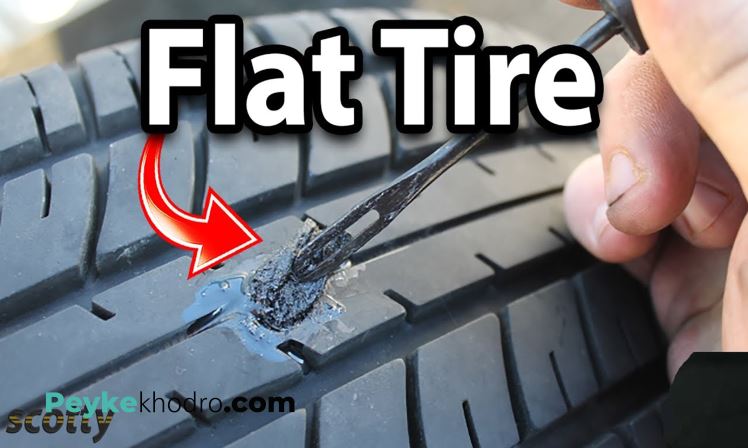 In this case, we note:
In this case, we note:
Driving style always determines the degree, the rate of wear. The more during the movement of acceleration and deceleration, the greater the wear.
During inspection, it should be taken into account that the cases considered determine uniform wear over the entire surface. What eats rubber unevenly? The answer is quite simple - there is a malfunction that leads to this.
It is possible to determine that the wheels are more eaten from the inside or outside only after a fairly long period of time. This is due to the fact that only after a few hundred kilometers this will become visible without the use of special instruments for measuring the tread size. nine0003
An important point is that it eats rubber from the inside and outside of the driving and steered wheels in different ways even in the absence of a malfunction. This is due to the following points:

If the steered wheels are driven, then the two phenomena are summed up and uniform wear occurs. A similar phenomenon is typical for a front-wheel drive vehicle. What eats uneven tires in this case - the answer lies in the presence of a malfunction.
When considering why Fiat Albea has tires with varying degrees of wear, it should be noted that in some cases the problem manifests itself after several hundred kilometers of travel. Let's single out the following reasons why rubber is being eaten unevenly:
 nine0012
nine0012 What eats rubber - quite a lot of answers. A Fiat or other car should be checked according to a certain pattern to identify the problem. This is due to the fact that even a simple cause, which will take little time and effort to eliminate, can lead to significant problems.
The reason, which is the answer to the question of what eats rubber, can be called uneven pressure on wheels mounted on the same axle. In such a case, it is also possible for the vehicle to pull to one side. An example is when a Fiat has one front tire with 1.5 atmospheres and the other with 2.0 atmospheres. nine0003
An example is when a Fiat has one front tire with 1.5 atmospheres and the other with 2.0 atmospheres. nine0003
In order to check this, it is enough to visit a gas station or a service station. After checking the pressure, you need to equalize it, after a while you can check whether the pressure difference is the cause of uneven wear.
Eating may occur on the inside or outside due to improper alignment of the wheels relative to the vehicle body. In this case, after a long time, severe abrasion can occur on either side. Considering such a problem, the following nuances should be noted:0003
These figures apply only to the front axle. What can strongly eat up the wheels after a few kilometers of the distance traveled?
If you knock down the camber settings, the cord wears out. At the same time, it eats the cord in different ways, depending on how the reset of the set parameters occurred. After several hundred kilometers, the problem can manifest itself clearly, up to the complete abrasion of the tread to the base of the cord. nine0003
At the same time, it eats the cord in different ways, depending on how the reset of the set parameters occurred. After several hundred kilometers, the problem can manifest itself clearly, up to the complete abrasion of the tread to the base of the cord. nine0003
Considering a similar question, we note the following:
After 300-500 kilometers, even a new tire can become completely unusable. However, it should be borne in mind that zero camber leads to uniform, but increased wear. This situation also leads to a significant increase in fuel consumption, as well as an increase in rolling resistance. nine0003
Resetting occurs for the following reasons:
 Check the condition of the collapse of the convergence should be carried out periodically. Long-term operation of the car on bad roads, which causes constant exposure to various loads, necessarily leads to a change in settings.
Check the condition of the collapse of the convergence should be carried out periodically. Long-term operation of the car on bad roads, which causes constant exposure to various loads, necessarily leads to a change in settings. Checking the camber at the service station takes a little time. Modern equipment allows you to quickly and accurately check the collapse of the toe. Experienced craftsmen perform the work of setting the desired parameters in a short time. nine0003
Experienced craftsmen perform the work of setting the desired parameters in a short time. nine0003
Not only different, but also low pressure can lead to a reduction in the life of the purchased tire. This is due to the fact that tire manufacturers create a design taking into account the recommended operating conditions. If you operate the wheels with low pressure, it begins to wear out quickly. In this case, the load will fall on the part that is not intended for this.
Low pressure indicates the following:
However, high pressure also causes eating to begin in the central part.
That is why you should always pay attention to what pressure. It is worth inflating the wheels to the rate recommended by the manufacturer.
There is a small chance that a manufacturing defect was made and uneven wear is due to the irregular shape of the product.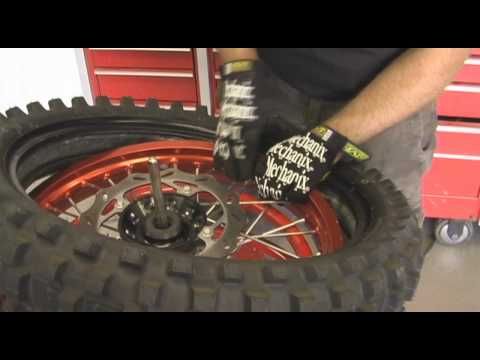 That is why you should purchase products only from trusted manufacturers. nine0003
That is why you should purchase products only from trusted manufacturers. nine0003
Among the most common problems are the incorrect composition of the rubber used, the wrong shape of the court, and other defects. Unfortunately, it is practically impossible to check the quality of tires without special equipment.
Although tires generally wear out before they reach their expiration date, there are certain time limits. Aging rubber can cause it to wear unevenly and severely. It is also worth noting that improper storage can lead to rapid aging of rubber. nine0003
All manufacturers indicate how long a product can last under certain operating conditions. It also specifies how it should be stored.
The aging of rubber causes it to lose its tightness and the structure to become porous. After a while, moisture begins to penetrate deep into the structure. Typically, manufacturers use metal cord to reinforce the structure. Moisture leads to the destruction of the metal base.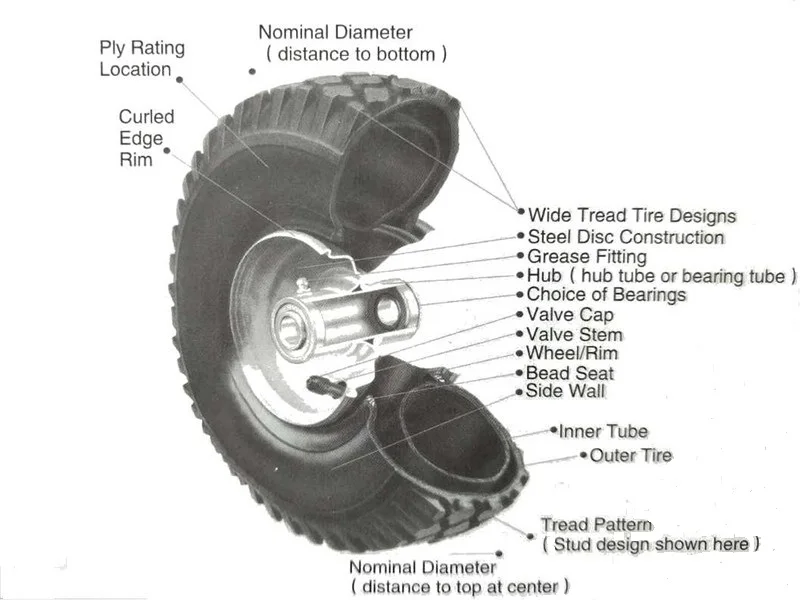 According to accepted standards, a tire cannot be used after 10 years from the date of its release. nine0003
According to accepted standards, a tire cannot be used after 10 years from the date of its release. nine0003
The above causes can result in severe surface abrasion after several hundred kilometers. However, some malfunctions can also lead to minor wear, which will appear after several thousand traveled distances. Such reasons include:
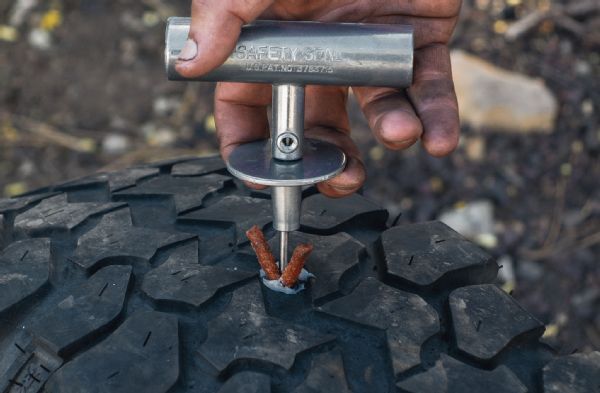 For example, after a strong blow, the shape of the disk may be broken.
For example, after a strong blow, the shape of the disk may be broken. Types of tire wear
The above reasons can also lead to tire wear on the inside. However, they are quite rare. Body geometry changes after a hard impact, suspension failure causing wheel tilt is often repaired sooner, and modern rims are highly durable. nine0003
In conclusion, early detection of the problem will correct the problem and preserve the integrity of the tire. Timely detection of the problem is possible with a constant visit to the service station. When pumping up wheels or conducting suspension diagnostics, you should pay attention to the condition of the tread.
Photo www. cnautos.com.cn
cnautos.com.cn
The structure of the car body provides for a certain number of hidden cavities. In order to ensure that moisture does not linger in them during operation, which causes corrosion, a special drainage system is provided. Unfortunately, few drivers know where the drain holes are located in their car, although they need to be monitored regularly. The gap in knowledge is being eliminated by the AvtoVzglyad portal. nine0003
Ivan Flyagin
Rust on a car is a nightmare for any car owner, so you need to take care that water does not linger on the body and in the body. To do this, it is recommended to periodically monitor the condition of the drainage system, since the dirt accumulated in it disrupts the normal drainage. This is especially true for owners of used cars.
To maintain the drains, you need to know where the drain holes are in the machine and check them at least once a year, in spring and autumn. Since many of the holes are not easy to get to, it is best if they are cleaned by professionals in a car service using the necessary equipment. nine0003
nine0003
Do not confuse the technological holes in the bottom of the machine, closed with rubber plugs, with the drainage system. Their function is limited to draining fluid during anti-corrosion treatment and body painting at the factory.
Photo http://www.1gai.ru
But the open hole in the front of the car is designed to remove moisture from the condensation system. Remember the puddle under a parked car in the summer? This is the job of removing the condensate from the drainage system, so the mentioned hole must always be open. nine0003
Under no circumstances should the drain channels in the luggage compartment, located under the spare wheel, be clogged. If they are clogged with dirt, they must be cleaned so that moisture does not accumulate there. Usually, the manufacturer provides two such holes in the cargo compartment to drain water.
Door drains tend to get clogged with dirt faster than others. They are located in the lower edge under the rubber band and are designed to drain water that has entered the inner cavity of the door.